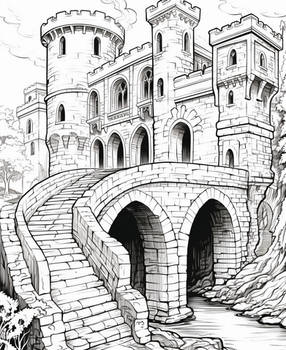Deviation Actions

Description
ENGLISH (based on R. Atkinson, Guns at last Light, K. Ford, Falaise 1944):
The battlefield at Falaise was unquestionably one of the greatest "killing fields" of any of the war areas. Forty-eight hours after the closing of the gap I was conducted through it on foot, to encounter scenes that could be described only by Dante. It was literally possible to walk for hundreds of yards at a time, stepping on nothing but dead and decaying flesh.
D.D. Eisenhower, Supreme Commander of the Allied Forces in Europe
The battle of the Falaise pocket was the last act of the Normandy campaign in 1944. The battle saw the encirclement and the destruction of most of the german Heeresgruppe B, as it struggled to retreat east of the Seine pushing through a thin corridor.
The scene is inspired by an actual episode, in which, in the morning of August 20th, the british Typhoon planes attacked, in full sunlight, a german convoy on the road between St.Lambert-sur-Dives and Mount Ormel. These attacks from the Jabos (german short for Jagdbomber) were extremely effective since the Allied had almost full air superiority and as they were directed against massed targets in heavy trafficked roads.
The plate was inspired by one the many, scary, statistics quoted by Atkinson in his excellent book. Together with almost 10.000 soldiers, 8.000 horses, which were still widely used by the german army, were also killed during the battle. Apparently, the stench of the massed dead bodies of men, horses and cows under the summer sun could penetrate the cockpits of the Spitfires flying 500 meters above. The cleaning of the dead animals had to be carried on until November.
Paris was liberated just a few days later, but the war was still far from being over.
REFERENCES:
Some photos of the Dantesque scenery described by Eisenhower. The latest metal fragments from the battle were removed only 1961.
s-media-cache-ak0.pinimg.com/o…
l7.alamy.com/zooms/39a7955a9ca…
www.ouest-france.fr/sites/defa…
ITALIANO (basato su R. Atkinson, Una guerra al tramonto, K. Ford, Parigi è vicina. La disfatta tedesca a Falaise):
Il campo di battaglia di Falaise è stato senza dubbio uno dei più grandi carnai tra tutte le zone di guerra. Quarantotto ore dopo la chiusura del corridoio, lo attraversai a piedi, per incontrare scene che potrebbero essere descritte solo da Dante. Si poteva letteralmente camminare per centinaia di metri calpestando null'altro che carne morta o putrescente.
D. D. Eisenhower, Comandante supremo delle Forze Alleate in Europa
La battaglia della sacca di Falaise fu l'ultimo atto della campagna di Normandia del 1944, dove il Gruppo Armate B tedesco venne accerchiato e quasi completamente distrutto, mentre tentava disperatamente di mantenere aperto un corridoio per fuggire a est della Senna.
La scena è ispirata a un episodio realmente avvenuto, durante il quale, la mattina del 20 Agosto, gli aerei lanciarazzi Typhoon attaccarono, con il sole del mattino, un convoglio tedesco in ritirata sulla strada tra St. Lambert sur Dives e il Monte Ormel. Questi attacchi degli Jabos (abbreviazione tedesca per Jagdbomber, cacciabombardiere) si rivelarono estremamente efficaci contro i bersagli ammassati e incollonnati nel traffico ed erano temutissimi anche in virtù del fatto che gli Alleati detenevano una schiacciante superiorità aerea, che permetteva loro di agire praticamente incontrastati dall'aviazione tedesca.
La tavola è inoltre ispirata ad una delle numerose e impressionanti statistiche riportate da Atkinson nel suo eccellente resoconto della campagna in Europa del 1944-45. Oltre a 10.000 soldati tedeschi, all'interno della sacca morirono, insieme a un incalcolabile numero di bovini, anche 8.000 cavalli, che ancora venivano utilizzati dall'esercito tedesco durante la sua disperata ritirata. Pare che quello che sarà poi ricordato come il "lezzo di Falaise", l'odore di migliaia di carcasse ammassate sotto il sole estivo, riuscisse a penetrare la carlinga di un caccia Spitfire a cinquecento metri di altezza. Solo per ripulire la zona della sacca da tutte le carcasse, i lavori procedettero fino a Novembre inoltrato, mentre il fiume Dives fu considerato per mesi contaminato e l'acqua veniva distribuita solo tramite cisterne.
Parigi venne liberata pochi giorni dopo, eppure la guerra era ancora lontana dal finire.
RIFERIMENTI:
Alcune foto dello scenario dantesco descritto da Eisenhower. Gli ultimi frammenti metallici della battaglia vennero rimossi solo nel 1961.
s-media-cache-ak0.pinimg.com/o…
l7.alamy.com/zooms/39a7955a9ca…
www.ouest-france.fr/sites/defa…
































